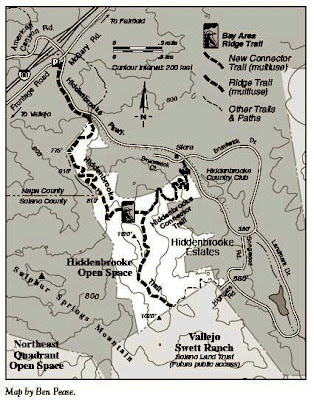-
Is there yet another endangered species living at Tejon Ranch?
If the Tehachapi slender salamander, which lives north of L.A., becomes a protected species, urban growth could be limited.
http://www.latimes.com/news/local/la-me-salamander28-2009apr28,0,135726.storyBy Louis Sahagun
April 28, 2009
Jeremy Nichols says he became smitten by the Tehachapi slender salamander when he ran across an article about it four years ago in a book about North American reptiles and amphibians.
The brick-red and stealthy
Batrachoseps stebbinsi clings to existence in two canyons about 13 miles apart and separated by a freeway 60 miles north of Los Angeles. It lives mostly underground and, without lungs, absorbs oxygen through its skin. When threatened, it can coil its body like a snake.
"I'm not a scientist, but I know enough to understand that these little guys are not adept at crossing freeways," Nichols, 29, of Denver, said in an interview Monday.
So Nichols, acting as a private citizen, filed a petition in 2006 requesting that the U.S. Fish and Wildlife Service list the salamander as an endangered species because of ongoing threats to its subterranean haunts. He cited Tejon Ranch Co.'s development plans, mining, livestock grazing and road construction as threats.
The agency agreed on Wednesday to study the matter, declaring in the Federal Register that Nichols' petition presented "substantial scientific or commercial information" to warrant a comprehensive review.
That could see the broad-headed, long-limbed salamander -- first scientifically identified in 1968 by noted herpetologist Robert C. Stebbins -- brought under federal Endangered Species Act protections within a few years.
The announcement does not mean that the Fish and Wildlife Service has decided to list the species, just "that there was enough information presented in the petition for us to take an in-depth look," said Lois Grunwald, a spokeswoman for the agency.
Ilene Anderson, a spokeswoman for the Center for Biological Diversity, a nonprofit conservation organization, praised the move on behalf of a creature already listed as threatened by the state of California.
"If we're going to save California's natural heritage, including this salamander, more land needs to be protected from urban sprawl," she said in a statement.
Barry Zoeller, spokesman for Tejon Ranch, said the company has no plans to develop any area "were the Tehachapi slender salamander is found or may be found."
Unlike many salamanders, the enigmatic species is a terrestrial breeder that lays its eggs in moist soils deep beneath rocky north-facing canyon slopes.
It is unknown how long it lives, and no juveniles have been seen in the wild or reported.
Nichols, a climate program director with Wild Earth Guardians, an environmental group based in Santa Fe, N.M., said he's never seen a living Tehachapi slender salamander.
But he added, "The canyons where it is found are now on my list of places in the West to visit someday."
---------------------------
http://www.biologicaldiversity.org/news/press_releases/2009/tehachapi-slender-salamander-04-22-2009.html
Another Tejon Species, the Tehachapi Slender Salamander,
Headed for Endangered Species Protection
4/22/2009--LOS ANGELES— The U.S. Fish and Wildlife Service today announced that the Tehachapi slender salamander could warrant federal Endangered Species Act protection due to the destruction of its very limited habitat in the Tehachapi mountains and southern Sierras of California. The salamander now lives primarily on Tejon Ranch, the massive, privately owned biodiversity gem north of Los Angeles.
"The Tehachapi slender salamander has taken a beating in the northern part of its range, while its southern range is now threatened by proposed developments on Tejon Ranch," said Ileene Anderson, a Center for Biological Diversity biologist. "This very rare animal needs immediate protection."
The Tehachapi slender salamander is known from only two populations. One in Caliente Canyon in the southern Sierras and one in the Tehachapi Mountains entirely on Tejon Ranch. Development plans on Tejon Ranch threaten five of the known locations of the secretive salamander. The salamander is also threatened by road construction, mining, livestock grazing, and flood-control projects. It has, for example, been eliminated from the Tehachapi Pass area due to highway construction.
"Development of Tejon Ranch poses an immediate threat to the Tehachapi slender salamander and dozens of other species," said Anderson. "If we're going to save California's natural heritage, including this salamander, more land needs to be protected from urban sprawl."
The Tehachapi slender salamander, first scientifically identified in 1968, was petitioned for listing under the Endangered Species Act in 2006. It is an enigmatic species that lives on rock talus and leaf covered slopes on northern exposures from the Kern River Canyon south to the Fort Tejon area – a range of less than 60 miles. Unlike many salamanders, the Tehachapi slender salamander is a terrestrial breeder, and it is believed that it lays its eggs in the moist soils underlying the deep rock talus and leaves that make up its habitat. It is unknown how long the Tehachapi slender salamander lives. Juveniles of the species have never been documented.
Contact: Ileene Anderson, Center for Biological Diversity, (323) 654-5943













